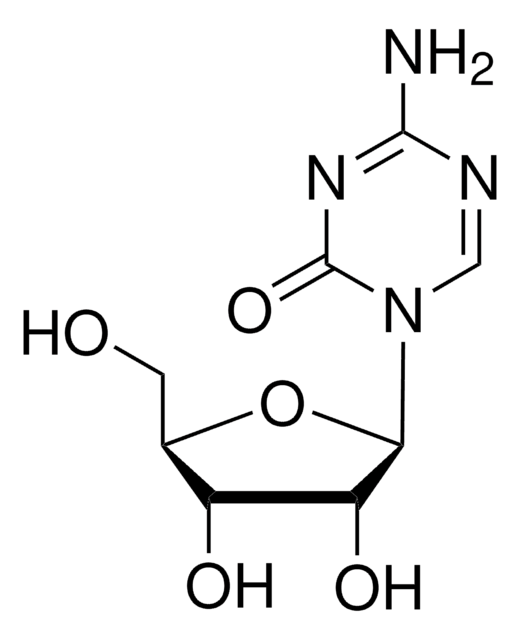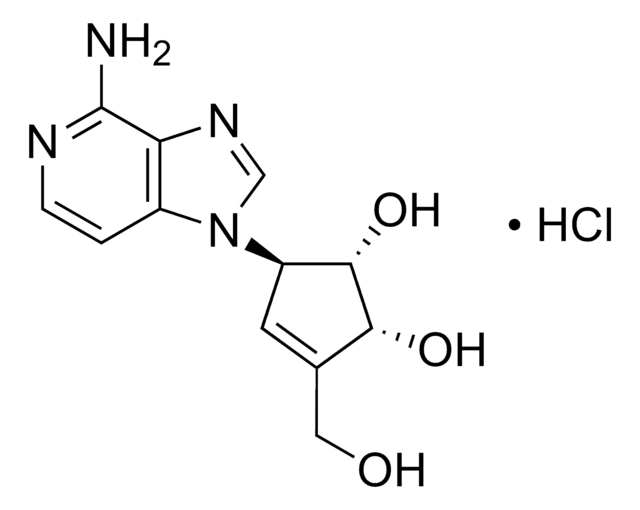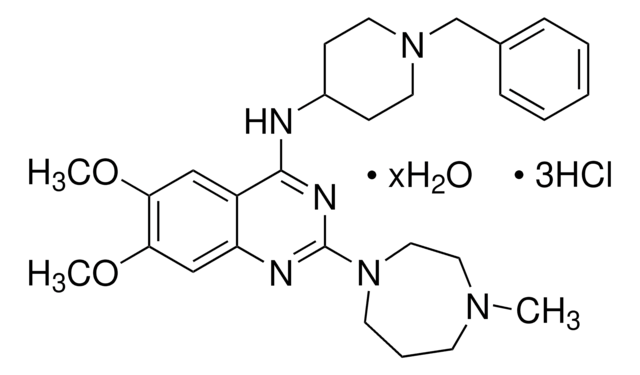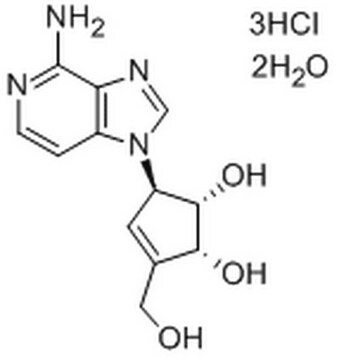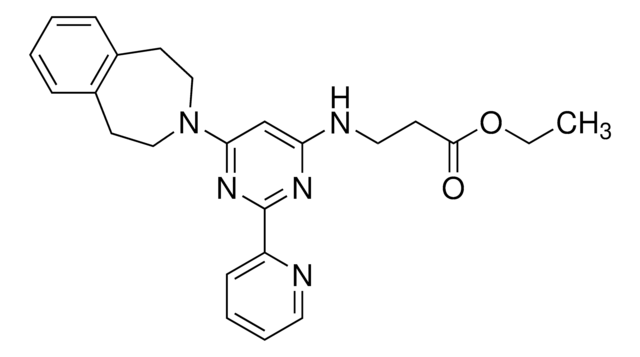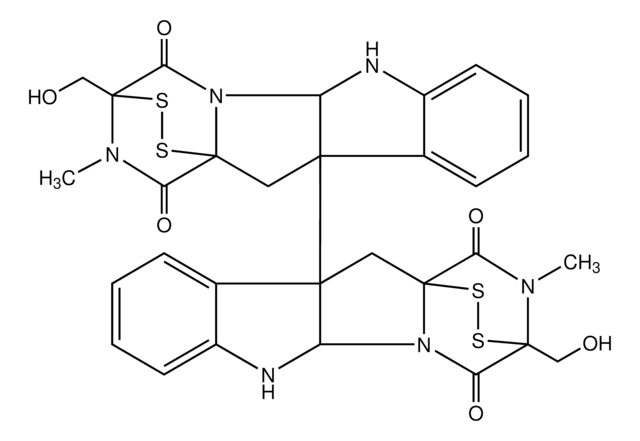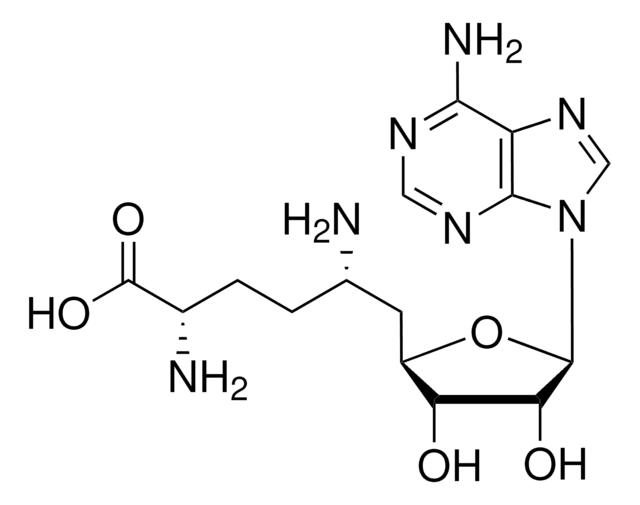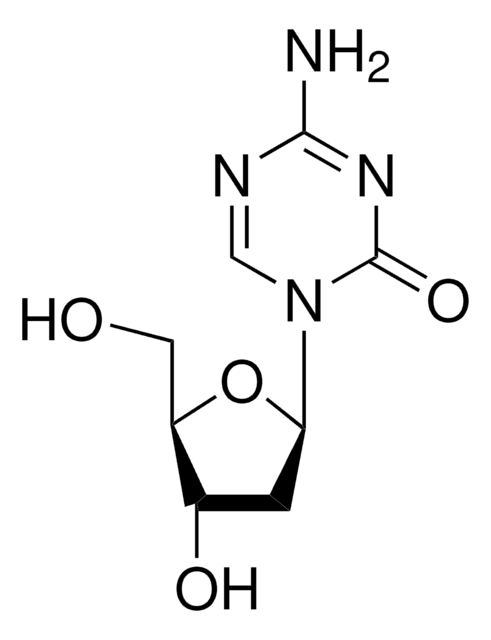252790
DZNep
≥97% (HPLC), solid, EZH2 inhibitor, Calbiochem®
Synonyme(s) :
Histone Methyltransferase EZH2 Inhibitor, DZNep, 3-deazaneplanocin A, HCl; (1S,2R,5R)-5-(4-amino-1H-imidazo[4,5-c]pyridin-1-yl)-3-(hydroxymethyl)cyclopent-3-ene-1,2-diol, HCl, HMTase Inhibitor X
About This Item
Produits recommandés
Nom du produit
Histone Methyltransferase EZH2 Inhibitor, DZNep, Histone Methyltransferase EZH2 Inhibitor, DZNep, CAS 120964-45-6, is a cell-permeable inhibitor of EZH2-mediated trimethylation of K27 on histone H3.
Niveau de qualité
Essai
≥97% (HPLC)
Forme
solid
Fabricant/nom de marque
Calbiochem®
Conditions de stockage
OK to freeze
desiccated (hygroscopic)
protect from light
Couleur
tan
Solubilité
DMSO: 10 mg/mL
Conditions d'expédition
wet ice
Température de stockage
−20°C
InChI
1S/C12H14N4O3.ClH/c13-12-9-7(1-2-14-12)16(5-15-9)8-3-6(4-17)10(18)11(8)19;/h1-3,5,8,10-11,17-19H,4H2,(H2,13,14);1H/t8-,10-,11+;/m1./s1
Clé InChI
UNSKMHKAFPRFTI-FDKLLANESA-N
Description générale
Conditionnement
Avertissement
Forme physique
Reconstitution
Autres remarques
Informations légales
Code de la classe de stockage
11 - Combustible Solids
Classe de danger pour l'eau (WGK)
WGK 3
Point d'éclair (°F)
Not applicable
Point d'éclair (°C)
Not applicable
Certificats d'analyse (COA)
Recherchez un Certificats d'analyse (COA) en saisissant le numéro de lot du produit. Les numéros de lot figurent sur l'étiquette du produit après les mots "Lot" ou "Batch".
Déjà en possession de ce produit ?
Retrouvez la documentation relative aux produits que vous avez récemment achetés dans la Bibliothèque de documents.
Les clients ont également consulté
Notre équipe de scientifiques dispose d'une expérience dans tous les secteurs de la recherche, notamment en sciences de la vie, science des matériaux, synthèse chimique, chromatographie, analyse et dans de nombreux autres domaines..
Contacter notre Service technique